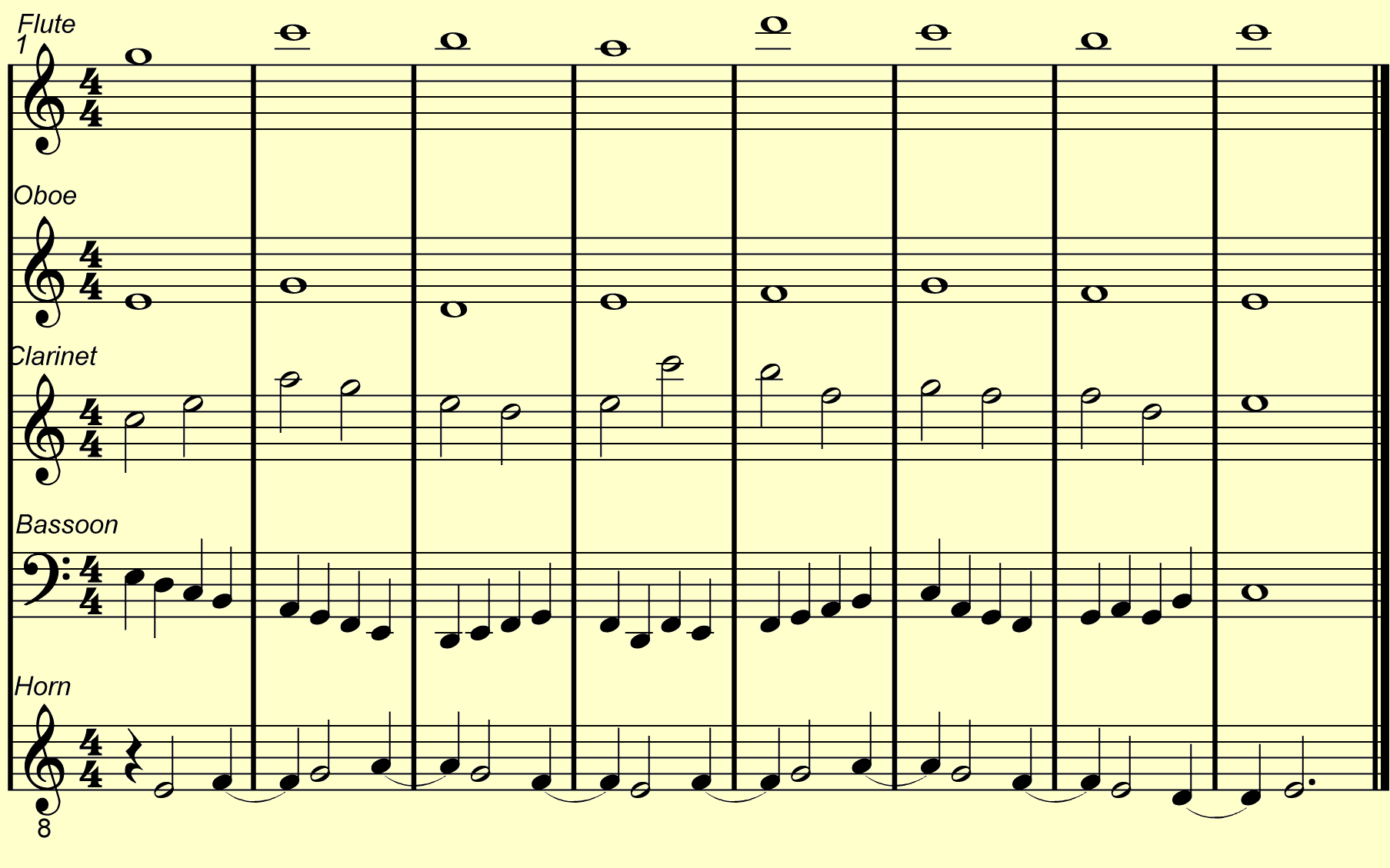You are using an out of date browser. It may not display this or other websites correctly.
You should upgrade or use an alternative browser.
You should upgrade or use an alternative browser.
Countermelody , counterpoint what is it ?
- Thread starter 10ndaYii
- Start date
bandcoach
Zukatoku - Mod Scientist
Counter-melody may or may not be counterpoint.
Differences are:
In counterpoint you work through what are known as species of counterpoint: 1st, 2nd, 3rd, 4th and 5th. Each species or more decorative, having more notes played per note in the main melody, until you finally get to 5th species which is essentially free-form. An example is Pachebel's Canon and Fugue in D major
Counter melody, on the other hand, is more about providing a melody that supports the main melody or counters it, when the main melody has lots of the notes, the counter-melody has very few notes and vice versa. This is more like the call-and-response approach to singing and prayer - the leader calls the melody and words, the congregation (or band) responds with the same words but maybe a different melody. Think Big Band Jazz, like In the Mood, Moonlight Serenade and even Play That Funky Music
[mp3]http://www.bandcoach.org/fp/audio/counterMelodyExamples.mp3[/mp3]
In each of these there is a main melody that answered by another group of instruments
In play that funky music the main melody is the vocal and the brass provide a response every 4 bars.
Differences are:
In counterpoint you work through what are known as species of counterpoint: 1st, 2nd, 3rd, 4th and 5th. Each species or more decorative, having more notes played per note in the main melody, until you finally get to 5th species which is essentially free-form. An example is Pachebel's Canon and Fugue in D major
Counter melody, on the other hand, is more about providing a melody that supports the main melody or counters it, when the main melody has lots of the notes, the counter-melody has very few notes and vice versa. This is more like the call-and-response approach to singing and prayer - the leader calls the melody and words, the congregation (or band) responds with the same words but maybe a different melody. Think Big Band Jazz, like In the Mood, Moonlight Serenade and even Play That Funky Music
[mp3]http://www.bandcoach.org/fp/audio/counterMelodyExamples.mp3[/mp3]
In each of these there is a main melody that answered by another group of instruments
In play that funky music the main melody is the vocal and the brass provide a response every 4 bars.
andrewsp88
New member
interesting
bandcoach
Zukatoku - Mod Scientist
Species 1
Depending on the author, the expectation is that the melody consists of single time unit (i.e. all whole notes or all half notes, etc) and the counterpoint/counter-melody is to be written above or below the melody. Some examples will help to understand:
Species 1 ~ Note against note
[mp3]http://www.bandcoach.org/fp/audio/species-01.mp3[/mp3]

Species 2 ~ 2 Notes against 1 note
[mp3]http://www.bandcoach.org/fp/audio/species-02.mp3[/mp3]

Species 3 ~ 4 Notes against 1 note
[mp3]http://www.bandcoach.org/fp/audio/species-03.mp3[/mp3]

Species 4 ~ Syncopated Notes against 1 note
[mp3]http://www.bandcoach.org/fp/audio/species-04.mp3[/mp3]

Species 1 - 4 together
I have lowered the individual lines to better fit a full spectrum: The bassoon is playing the 2 octaves below how it was first presented and the Horn is playing the line 1 octave below.
[mp3]http://www.bandcoach.org/fp/audio/species-all.mp3[/mp3]

There are many rules (dos and don'ts) about how to write good counterpoint, so many that many people have written books on the subject (but not me ). They include discussion on how to prepare dissonances (non-chord notes) and the application of the rules to melody writing and composition in general. They also cover several melodic devices - units of melodic content - and how they should and shouldn't be used.
). They include discussion on how to prepare dissonances (non-chord notes) and the application of the rules to melody writing and composition in general. They also cover several melodic devices - units of melodic content - and how they should and shouldn't be used.
The rules are easily summarised into 2 or 3 pages and form the basis of most advice given about voice leading (individual lines in chordal harmony).
I may post this at a later date.
Note against Note
Species 22 notes for every note
Species 34 notes for every note
Species 4Syncopation, suspensions, using 2 notes against 1 note
Species 5All of the above
Depending on the author, the expectation is that the melody consists of single time unit (i.e. all whole notes or all half notes, etc) and the counterpoint/counter-melody is to be written above or below the melody. Some examples will help to understand:
Species 1 ~ Note against note
[mp3]http://www.bandcoach.org/fp/audio/species-01.mp3[/mp3]

Species 2 ~ 2 Notes against 1 note
[mp3]http://www.bandcoach.org/fp/audio/species-02.mp3[/mp3]

Species 3 ~ 4 Notes against 1 note
[mp3]http://www.bandcoach.org/fp/audio/species-03.mp3[/mp3]

Species 4 ~ Syncopated Notes against 1 note
[mp3]http://www.bandcoach.org/fp/audio/species-04.mp3[/mp3]

Species 1 - 4 together
I have lowered the individual lines to better fit a full spectrum: The bassoon is playing the 2 octaves below how it was first presented and the Horn is playing the line 1 octave below.
[mp3]http://www.bandcoach.org/fp/audio/species-all.mp3[/mp3]

There are many rules (dos and don'ts) about how to write good counterpoint, so many that many people have written books on the subject (but not me
 ). They include discussion on how to prepare dissonances (non-chord notes) and the application of the rules to melody writing and composition in general. They also cover several melodic devices - units of melodic content - and how they should and shouldn't be used.
). They include discussion on how to prepare dissonances (non-chord notes) and the application of the rules to melody writing and composition in general. They also cover several melodic devices - units of melodic content - and how they should and shouldn't be used.The rules are easily summarised into 2 or 3 pages and form the basis of most advice given about voice leading (individual lines in chordal harmony).
I may post this at a later date.
Last edited:

